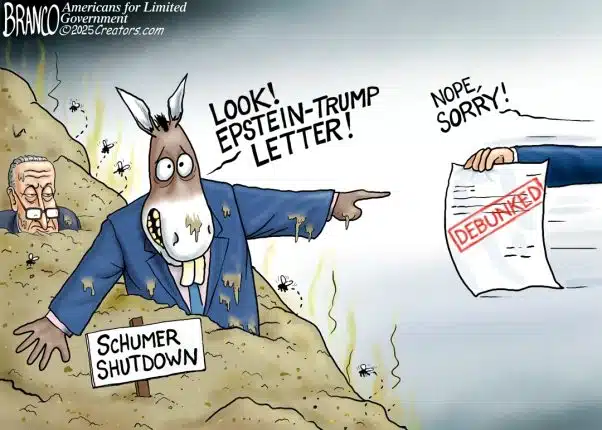By Printus LeBlanc
China has a strategy unlike any the U.S. has faced. In the Cold War with the Soviet Union, it was military force versus military force. China learned a lesson from the USSR and is taking an asymmetrical approach in dealing with the U.S. Yes, China is challenging the U.S. in the military sphere, but it is also attacking the U.S. on multiple unexpected fronts. China is attacking the U.S. in ways Russia was never capable of, and has proven to be far more dangerous.
When the U.S. thinks of warfare, it typically thinks of kinetic warfare, physical destruction of a target by military means. China, however, has adopted a total warfare strategy. A 2014 White Paper from U.S. Army Special Operations Command on Unconventional Warfare discusses different methods of warfare being used by various adversaries. With regards to China, it stated, “China will use a host of methods, many of which lie out of the realm of conventional warfare. These methods include trade warfare, financial warfare, ecological warfare, psychological warfare, smuggling warfare, media warfare, drug warfare, network warfare, technological warfare, fabrication warfare, resources warfare, economic aid warfare, cultural warfare, and international law warfare.”
An example of China using financial warfare is the Belt and Road Initiative (BRI). The BRI is an ambitious development project spanning the globe. Through a series of Chinese controlled ports stretching from the mainland to the Mediterranean and railroads running to Europe, China pushes to exert control. The project will connect China to 65 percent of global population and 40 percent of worldwide GDP.
China has already used the BRI to exert pressure and influence policies. China’s COSCO Shipping took a 51 percent stake in Greece’s largest port in 2016. One year later, Greece would block a European Union statement on human rights abuses by China in the UN. It was the first time the EU failed to make such a statement at the UN. Many directly attributed the move to Chinese pressure.
One of the chief weapons in China’s economic warfare toolbox is intellectual property (IP) theft. China steals IP of companies doing business in China. When a foreign company goes into the communist country, they are often forced to partner with a Chinese company to do business. From there the Chinese company steals the IP and competes against their former partners. The Chinese company skips R&D, saving itself millions, often putting the foreign company out of business.
The Commission on the Theft of American Intellectual Property estimates Chinese IP theft costs the U.S. economy between $225 billion and $600 billion annually. No small sum.
There is now a growing number excusing China’s IP theft. They point to the rise in Chinese payments of licensing fees and royalties over the last decade. The payments now reach almost $30 billion per year. What is being forgotten is how China got to where it is.
Of course, China wants to play by the rules now; the Communist government has stolen so much IP it is now in its financial interest to enforce IP laws. China’s nefarious actions put so many companies out of business of which it now holds the IP, and it wants the royalties and fees paid. China will play by the rules when it is in its interest and break the rules it feels it needs to in order to gain an advantage.
This is just the tip of the iceberg. From U.S. universities to Hollywood to Wall Street, China has launched an all-out assault, with the goal of supplanting the U.S. as the world’s superpower. However, it may not be too late. It seems some are starting to take notice of the Chinese threat.
Last week, the House Permanent Select Committee on Intelligence held a hearing titled, “China’s Threat to American Government and Private Sector Research and Innovation Leadership.” Testifying before the committee was a bevy of experts on the threat posed by China. One of the experts captured what is really at stake with China.
James Phillips, Chairman, and CEO of NanoMech testified before the committee, “When and if that happens, America loses. The world changes, everything changes. China may dominate the world. But it won’t have to use its military. When its GDP surpasses Americas, it will dominate the world economically by a margin far more than the United States currently has. At that point China will be the new leader of the world. All decisions between countries on the subjects of peace, trade, environment, borders, laws, and human rights would defer to China. Because more than ever, the new golden rule applies: He who has the gold, rules. And the country with the dominant GDP has the gold and the good jobs.”
FBI Director Christopher Wray also sees China as the greatest threat. Wray spoke at the Aspen Security Forum last week stating, “I think China, from a counterintelligence perspective, represents the broadest, most challenging, most significant threat we face as a country.” He continued, “It is economic espionage, as well as traditional espionage…It is non-traditional collectors as well as traditional intelligence operatives. It is human sources as well as cyber means.”
Russia doesn’t pose near the threat as China. As Sen. John McCain (R-Ariz.) famously said, “Russia is a gas station masquerading as a country,” China, on the other hand, has the capability to challenge the U.S. not just militarily, but economically. President Trump recognizes the threat China poses; it is time for Congress to do the same.
Printus LeBlanc is the Legislative Director at Americans for Limited Government.







